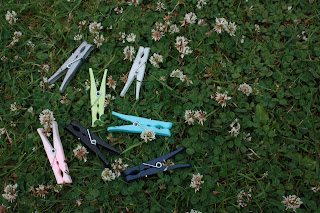1) Spectators sitting in a row

- a row of objects all at the same distance from the camera
- spectators sitting in a row watching tennis has created imaginary horizontal lines
2) Horizontal lines with objects in the pond

- a mass of objects seen from a low angle
- the mass of some weeds in the water viewing from low angle appears to have imaginary horizontal lines
3) a wooden wall

- man-made flat surface
- this is a wooden wall of a coffee shop in a park. the lines are obvious to the eyes
4) stairs

- man-made flat surface
- from low angle, the flat surface of stairs have created horizontal lines. if they were viewed from different angles, they would have seemed differently
Vertical lines:
1) long necks of Mute swans

- this is not from the list but it is problably similar to row of standing human figures
- The long necks of these swans have made some vertical lines to the eyes
2) Trees

- tree trunks
- two tree trunks from a park have created vertical lines
3)Frieze

- this can be man made structures or a row of standing human figures
- this frieze on a wall has created vertical lines to the eyes
4) part of a buidling

- wall/other man-made structures
- the vertical lines on a building are quite obvious
It wasn easier for me to find "Vertical lines" than "Horizontal lines" in this exercise.
One of the reasons, to me I think, was because of gravity. Everywhere I see are figures, humans, trees, flowers, buildings which do stand up right.
If I go to the country I would probably see more horizontal lines, look into horizon, rice field, open field, edge of the ocean.
From "Micheal Freeman's The photographer's Eye"
1) Horizontal is the baseline in composition. Our frame of vision is horizontal, and the eyes scan most easily from side to side. Therefore horizontal lines are visually the most comfortable.
Horizontal lines generally express stability, weight, calm and resfulness.
2)Vertical is the second primary component of the frame.
Vertical line usually has more of a sense of speed and movement eihter up or down. To an extent, they can express strength and power.
In photograph, both horizontal and vertical lines are immediately compared by the eye with the frame edges, and even the slightest discrepancy is immediately noticeable.
Therefore it is best to use spirit level together with tripod when shooting a photo!
Horizontal and vertical lines create an equilibrium in the sense that their energies are perpendicular to each other; each one acts as a stop to the other. They create a sense of balance.
















